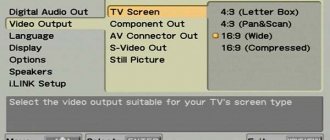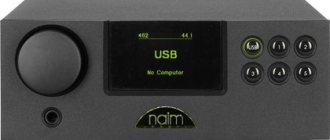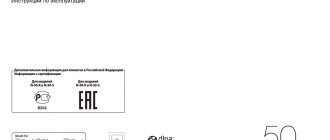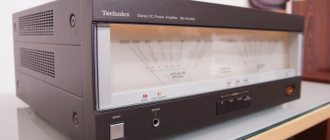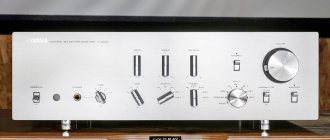Getting Started Thank you for purchasing the MARAN product...
Page 4
- Image
- Text
11
Beginning of work
Thank you for purchasing a MARANTZ product.
To ensure proper operation of the product, we recommend that you carefully read the user manual.
After reading, keep this manual for future reference.
Beginning of work
. . . . . . . . . . . . . . . . . . . . . . . . . . . . . . . . . . . . . . . . . . . . . . . . . . 1
Optional equipment
. . . . . . . . . . . . . . . . . . . . . . . . . . . . . . . . . . 2
About this guide
. . . . . . . . . . . . . . . . . . . . . . . . . . . . . . . . . . . . . . . . . . . . 2
Main characteristics
. . . . . . . . . . . . . . . . . . . . . . . . . . . . . . . . . . . . . . . . 2
Handling Precautions
. . . . . . . . . . . . . . . . . . . . . . . 3
Discs
. . . . . . . . . . . . . . . . . . . . . . . . . . . . . . . . . . . . . . . . . . . . . . . . . . . . . . . . . . . . . . 3
Playable disc types. . . . . . . . . . . . . . . . . . . . . . . . . . . . . . . . . . 3
Using disks. . . . . . . . . . . . . . . . . . . . . . . . . . . . . . . . . . . . . . . . . . . 3
Loading discs. . . . . . . . . . . . . . . . . . . . . . . . . . . . . . . . . . . . . . . . . . . . . . . . . . 3
Precautions when loading discs. . . . . . . . . . . . . . . . . . . 3
Handling precautions. . . . . . . . . . . . . . . . . . . . . . . . 4
Precautions when storing discs. . . . . . . . . . . . . . . . . . 4
Disk cleaning. . . . . . . . . . . . . . . . . . . . . . . . . . . . . . . . . . . . . . . . . . . . . . . . . . . 4
About the remote control
. . . . . . . . . . . . . . . . . . . . . . . . . . . . . . . . . . . . . . . . . . . . . . . . . . . . . . . . 4
Installing batteries. . . . . . . . . . . . . . . . . . . . . . . . . . . . . . . . . . . . . . . . . . . . . . . 4
Operating range of the remote control. . . . . . . . . . . . 4
Names of buttons and their functions
. . . . . . . . . . . . . . . . . . . . . . . . . . . . . 5
Front Panel . . . . . . . . . . . . . . . . . . . . . . . . . . . . . . . . . . . . . . . . . . . . . . . . . 5
Display. . . . . . . . . . . . . . . . . . . . . . . . . . . . . . . . . . . . . . . . . . . . . . . . . . . . . . . . . . 5
Back panel . . . . . . . . . . . . . . . . . . . . . . . . . . . . . . . . . . . . . . . . . . . . . . . . . . . . 6
Remote control . . . . . . . . . . . . . . . . . . . . . . . . . . . . . . . . . . . . . . . . . . . . . . . . . . . . . . . . . . 6
Basic connections
. . . . . . . . . . . . . . . . . . . . . . . . . . . . . . . . . . . . . . . 7
Preparation
. . . . . . . . . . . . . . . . . . . . . . . . . . . . . . . . . . . . . . . . . . . . . . . . . . . . . . . . 7
Connecting cables. . . . . . . . . . . . . . . . . . . . . . . . . . . . . . . . . . . . . . . . . . . . 7
Analog connections
. . . . . . . . . . . . . . . . . . . . . . . . . . . . . . . . . . . . . . . . . . 7
Connecting the power cord
. . . . . . . . . . . . . . . . . . . . . . . . . . . . . . . . . . 7
Basic Operations
. . . . . . . . . . . . . . . . . . . . . . . . . . . . . . . . . . . . . . . . . . . . 8
Before use
. . . . . . . . . . . . . . . . . . . . . . . . . . . . . . . . . . . 8
Switching sound modes
(Playback layer) . . . . . . . . . . . . . . . . . . . . . . . . . . . . . . . . . . . . . . . . . 8
Power off. . . . . . . . . . . . . . . . . . . . . . . . . . . . . . . . . . . . . . . . . . . . . 8
Switching the input source
. . . . . . . . . . . . . . . . . . . . . 9
Playing discs
. . . . . . . . . . . . . . . . . . . . . . . . . . . . . . . . . . . . . . . . . 9
Plays Super Audio CDs or CDs. . . . . . . . . . . . . . . . . 9
Turn off the display. . . . . . . . . . . . . . . . . . . . . . . . . . . . . . . . . . . . . . . . . . . .10
To change the time display. . . . . . . . . . . . . . . . . . . . . . . . . . . . . . . . . .10
Listening with headphones. . . . . . . . . . . . . . . . . . . . . . . . . . . . . . . . . . . .10
Repeat playback mode (repeat). . . . . . . . . . . . . . . . . .10
Play in random order
(Random Play) . . . . . . . . . . . . . . . . . . . . . . . . . . . . . .10
Playing tracks in a specific
order (Program playback). . . . . . . . . . . . . . . . . . . . . .eleven
Searching for a specific track (AMS playback). . . . . . . . . . .eleven
Setting up digital output. . . . . . . . . . . . . . . . . . . . . . . . . . . . . . . . . . .eleven
More complex connections
. . . . . . . . . . . . . . . . . . . . . . . . . . . . . . . .12
Preparation
. . . . . . . . . . . . . . . . . . . . . . . . . . . . . . . . . . . . . . . . . . . . . . . . . . . . . . .12
Connecting cables. . . . . . . . . . . . . . . . . . . . . . . . . . . . . . . . . . . . . . . . . . .12
Digital connection
. . . . . . . . . . . . . . . . . . . . . . . . . . . . . . . . . . . . . . . . .12
Digital audio output. . . . . . . . . . . . . . . . . . . . . . . . . . . . . . . . . . . . . . . . . .12
Digital audio input. . . . . . . . . . . . . . . . . . . . . . . . . . . . . . . . . . . . . . . . . . .12
Connecting a USB storage device/iPod
. . . . . . . . . . .13
PC connection
. . . . . . . . . . . . . . . . . . . . . . . . . . . . . . . . . . . . . . . . . . . . . . . . .13
Connecting the remote control
. . . . . . . . . . . . . . . . . . . . . . . . . . . . . . . . . . . . . . . . . .14
Additional functions
. . . . . . . . . . . . . . . . . . . . . . . . . . . . . . . . . . .14
Before starting memory playback
USB devices or iPod
. . . . . . . . . . . . . . . . . . . . . . . . . . . . . . . . . . . . . . . . .14
Play MP3 and WMA files
. . . . . . . . . . . . . . . . . . . . . . . . . . .14
MP3 and WMA formats. . . . . . . . . . . . . . . . . . . . . . . . . . . . . . . . . . . . . . . . . . . .14
Plays MP3 and WMA files. . . . . . . . . . . . . . . . . . . . . . . . . . .15
Playback order of MP3/WMA files. . . . . . . . . . . . . . . . . . .15
Playing an iPod®
. . . . . . . . . . . . . . . . . . . . . . . . . . . . . . . . . . . . . . . . . .16
Using an iPod®. . . . . . . . . . . . . . . . . . . . . . . . . . . . . . . . . . . . . . . . . . . .16
Disabling your iPod. . . . . . . . . . . . . . . . . . . . . . . . . . . . . . . . . . . . . . . . . . . . . . . .16
Playing USB storage devices
. . . . . . . . . . . . . .17
Playable USB storage device formats. . .17
Playing files saved on storage devices
USB devices. . . . . . . . . . . . . . . . . . . . . . . . . . . . . . . . . . . . . . . . . . . . . . . .18
Removing a USB storage device. . . . . . . . . . . . . . . . . . . .18
Use as a D/A converter
. . . . . . . . . . . . . . . . . . .18
Connecting and playing a digital device
(Coax/Opt) . . . . . . . . . . . . . . . . . . . . . . . . . . . . . . . . . . . . . . . . . . . . . . . . . . . . . . .18
Setting menu options
. . . . . . . . . . . . . . . . . . . . . . . . . . . . . . . . . . . .19
Timer play (timer play settings). . . . . . . . . . .19
SA-CD (Sound Mode Switching) . . . . . . . . . . . . . . . . . . . . . .20
USB Setup (USB storage device management). . . . . . . .20
iPod Setup. . . . . . . . . . . . . . . . . . . . . . . . . . . . . . . . . . . .21
Auto STB (Auto Standby) . . . . . . . . . . . . . . . . . . .22
Description of the terms used
. . . . . . . . . . . . . . . . . . . . . . . . . .23
Problems and solutions
. . . . . . . . . . . . . . . . . . . . . . .24
Specifications
. . . . . . . . . . . . . . . . . . . . . . . . . . . . . . . .25
Subject index
. . . . . . . . . . . . . . . . . . . . . . . . . . . . . . . . . . . . . .26
Content
The secret of favor
It's amazing how Marantz has managed to maintain a generally favorable attitude from the audio community all these years. I don’t remember any significant complaints that are usually heard left and right by our capricious public. It's no secret that hi-fi brands change owners. Marantz did not escape this fate either. But all these legal vicissitudes did not particularly affect the image of the brand. I think there are several reasons for this.
Firstly, Marantz equipment is always ready to play up the owner’s ego - it looks solid regardless of the cost. Down to the little things like copper screws. So our charges have a copper chassis and an aluminum cover on top 5 mm thick. And no experiments with puritanical aesthetics: even the most budget Marantz, even in a black finish, will have gold letters. Secondly, indeed, the company has never been caught doing outright hackwork or skimping on parts. And thirdly, last but not least: in the place where numerous Chinese competitors list transistor numbers, Marantz has a living person - a brand ambassador. One can guess how deeply familiar to many, Ken Ishiwata, interferes in the process of developing new models, but let me share one observation that seems to me very important.
At one time, I was baffled several times by devices with good measurement numbers, but completely flat and uninteresting in musical presentation (looking ahead, I’ll say that Marantz’s measurements are quite good, but this cannot be an abstract end in itself). Trying to guess the sound signature of a component based on graphs alone is a lost cause. At least according to those used by the standards of the 50s (others have not yet been invented besides jitter). The measurements that we read in the specifications only outline the overall electrical “health” of the layout under load with a certain static signal.
For example, amplifiers with deep feedback demonstrate record low distortion in such tests. But why did the enthusiasm around them noticeably diminish in the late 70s? But because with the real impedance of the speakers, the stability of such circuits may suffer. So-called transient intermodulation interference is on the rise and is not documented at all by standard harmonic and intermodulation distortion reporting.
Another example: a portable amplifier will show comparable measurement results using conventional and “audiophile” op-amps, but even an untrained listener will prefer to listen to headphones with the second option, which contains op-amps with better transient characteristics. Marantz's proprietary HDAM modules are also a declaration of departure from standard microcircuits in favor of discrete elements, which are considered more “audilomaniac”. In our case, HDAMS3 operate in the pre-amplifier section of the PM-KI and the output stages of the SA-KI.
However, do not forget that you will always need a person for the final tuning of an audio component, and not just anyone. This should be a person with sufficient experience as a listener who understands what he wants and in which direction he should move. And this veteran in a Marantz collared caftan is certainly getting his paycheck.
Dimensions and reality
If we are not talking about a DSD stream, the SA-KI player offers two filter positions for incoming PCM, which can only be adjusted using the remote control. The annotation states that Filter 1 generates a symmetrical pulse shape, i.e. it is linear-phase. And Filter 2, with a long post-echo, works like a minimum phase. At the same time, the instructions indicate the second mode as “brighter”.
The nature of the impulse response for Filter 1 and Filter 2 of the Marantz SA-KI Ruby
Measurements confirm this. The frequency response in the first version has a very gentle roll-off at high frequencies, and this circuit sounds a little softer. Those. the linear-phase filter was set to Slow mode, and the minimum-phase filter was set to a steep Sharp roll-off characteristic.
Usually now manufacturers stuff DACs with a bunch of filters, of which only one or at most two are actually used. So, in my opinion, it is most obvious to operate with only two options, “soft/bright,” as is done with SA-KI Ruby. If anything, for some time now I prefer filters, if not NOS, then Slow. They actually “ring” less and don’t “scratch” as much at high frequencies.
Frequency response difference for Filter 1 (black) and Filter 2 (red) modes
The experiments also showed another interesting feature of SA-KI Ruby playback. Without a block diagram, just words about stream distillation to DSD256, it’s difficult for me to judge the real working mechanism of Marantz Music Mastering. The measured minimum noise level (minus 112-114 dB) due to internal DSD modulation is somewhat inferior to the figures of top-end chips in PCM mode, which demonstrate a limit of around 120 dB. But for the actual listening experience this difference does not matter.
But below you can see that at least this Marantz Music Mastering concept, unlike traditional chips, allows you to confidently resist intersample distortion.
White noise character at 0 dB maximum: excellent ultrasonic noise suppression by Marantz Musical Mastering
The graph shows that the noise level in the ultrasonic range remained virtually unchanged when playing white noise with a limit level of 0 dB. This feature bodes well. Such an audio path is no longer so terrible for modern pop/rock recordings with hellish mastering. In any case, SA-KI Ruby will not add intersample distortion to the existing clipping, as happens with most DACs on standard PCM chips. Even top-class devices, including those based on FPGA matrices, cannot escape the scourge of this kind of distortion. And here, as you can see, everything worked out.
SA-KI Ruby audio output measurements demonstrate levels of distortion and noise even slightly lower than the manufacturer's claims
Let's revisit the listening experience with a pair of Marantz Rubys. The path itself is transparent to the signal, and the amplifier will firmly and calmly hold a variety of speakers by the testicles. The flip side of this transparency is the extremely wide range of audio flavors available. Was the stereo mix loud, with dry bass? Receive and sign exactly what was given, no mess along the way. If these were live instruments, for example, a recording of an organ or a choir, then oh yes - you will have three-dimensionality, and positioning, and flickering sound canvases. In general, I got the impression that the set excels best at the repertoire of classical music. Perhaps it was this that Ken Ishiwata consulted at the final stages of fine-tuning the product before launching it into series.
Classic and modern
Limited editions of KI are a fairly regular event for the company, but always attract the attention of fans of the brand. This time, the engraving of Ishiwata's signature is decorated with a small ruby. Laugh all you want, but such details, as well as the limited edition of the series (1000 pieces), only stir up interest. Although, most likely, some of the solutions from the exclusive series will in the future migrate to more affordable components without the KI signature. What else does the version with ruby have in common and what makes it different?
Marantz is considered a fairly conservative hi-fi brand, but both components present newfangled elements. The player does not have a chip with a DAC; instead, on a logical matrix, all signals are translated and processed in the DSD format. And the PM-KI amplifier has a pair of Hypex NCore 500 class D modules, which take up half the space of the preamp section. At this point, or rather, a little lower, in the section dedicated to listening, the reviewers begin to blow the whistle and assure that they have not heard any class D color. To be honest, I find it difficult to give out labels, and therefore, breaking the traditional order of the review, I will immediately state my impressions.
The most amazing performance of the PM-KI Ruby amplifier was demonstrated by the MM/MC phono preamplifier section, which was paired with the fairly budget-friendly Clearaudio Concept. It was quite impressive. That is, understand, class D versus class A, multibit versus delta sigma, and so on - all these are artificial points of contention for journalistic and forum activity. The same Hypex NC500 amplifiers are a high-quality (and not cheap) product that can be flexibly configured. The designer of the NCore series, Bruno Putzi, claims that the traditional feedback circuit really has a bad reputation. But if you make the feedback loop extremely deep, then something like enlightenment will occur, and excellent resistance to external load will be added to low distortion. The NC500s are rated to deliver a crazy 700W into 4 ohms. But this is in a balanced circuit with a separate power supply per channel, while Marantz has only one and the power figures are prudently stated to be more than three times lower.
Marantz always balances between classic and innovative elements. Fans of toroids will find them in the power supplies of both devices. In PM-KI, the linear unit powers the preliminary section, where the volume is controlled by the NRJ MUSES72320 microcontroller, and the final section is handled by the pulse Hypex SMPS600. A pair of NC500 amplifier boards fit directly into the component's backplate and speaker connectors, eliminating unnecessary wiring. And so that this review does not look like an ode to Ruby, of course, it is worth listing the complaints.
The nature of the interpenetration of channels when the display of the SA-KI Ruby player is turned on (red) and turned off (black). In the first case, the influence of the 50 Hz power supply is noticeable
Nuances with headphones
The most controversial link in the Marantz pair is the implementation of the headphone output. The measured impedance in the PA-KI Ruby amplifier was about 85 Ohms at the output. This is higher than the values of the three pairs that I had saved for review. For normal, undistorted operation of the amplifier-load circuit, it must be the other way around, otherwise path noise will be heard even at rest.
Recently, there has been a tendency to produce large headphones with an impedance below a hundred, down to 20 Ohms, while having low sensitivity. Those. they still need a lot of power from the amp. Because of the 85 Ohm of the Marantz PA-KI Ruby, they are no longer suitable here. It is advisable to load the output of our amplifier with tight models like the Beyerdynamic T1 at 600 Ohms. Fortunately, the Marantz PA-KI Ruby has a decent headroom for this output, almost 9 Volts at idle until clipping occurs, which occurs at the volume scale (-17) on the indicator.
In the SA-KI Ruby player, work with headphones is regulated by a separate small knob, which is reminiscent of adjusting the bias current on a cassette deck, although the signal level is not displayed. The impedance of the headphone output of 17.5 Ohms is significantly lower here than in the amplifier, but it is also too early to declare full compatibility. First you will have to put aside the 16-ohm models. But even 600 Ohms cannot be driven, since the amplifier in the player is much weaker than in the PA-KI Ruby, and its power in this case will be only 10 mW. The optimal area of application includes headphones from 32 to 100 Ohms, i.e. just those that PA-KI Ruby did not get in terms of impedance.
However, direct listening convinced me that the implementation of headphone amplification does not correspond to the high class of the main audio path, so for such tasks it is better to bother with a separate device and turn off the output itself through the player menu. The same procedure can be applied to the display itself, which will turn on only when the device’s operating mode is changed - for example, when the audio signal parameters are changed.
Questions
It seems like it’s been said a hundred times already that there is no alternative to blue backlighting, let’s not fuss this time and just turn it off. The most obvious issue is the lack of balanced switching in such expensive units as the KI Ruby. After all, XLR, unlike RCA “tulips”, has no problems with interference and ground loops at all.
In fact, it turns out that the PM-KI Ruby is half of the balanced Marantz PM-10, with the same Hypex NCore modules. And for the price, that's exactly what it looks like. But the phono preamp with the beautiful name Marantz Musical Premium Phono EQ on field devices with a completely discrete base, friends, is definitely a success here. You no longer need to buy a separate component. The feedback stage is used only for the MS section (60 dB), and the MM (40 dB) operates without it.
There is a switch for bi-amping mode on the rear panel of the amplifier. The switching settings even allow you to make 5.1 audio for multi-channel SACD from three amplifiers, but it seems that the idea of assembling so many limited edition components in one place would be too much. And SA-KI Ruby, by the way, does not have corresponding outputs.
As for SA-KI Ruby personally, the developers' desire to make a universal player is noticeable, but its concept probably reflects Ishiwata's personal preferences. If in the PM-KI Ruby amplifier this resulted from an advanced phono preamplifier and the absence of digital inputs, then the player shows that the grandfather is most accustomed to operating with optical media - SACD and CDs. You can also throw even DVD-Rs with high-res into the tray with the branded SACD-M3 transport, if there are fans of this method of collecting.
But the USB connector, responsible for reading flash drives, is now located on the rear panel. I don’t argue, the surroundings there are very beautiful, with copper backs, and the branded SPKT-100 speaker terminals of the PM-KI Ruby amplifier look like audio delicacies. But what should a flash drive do on the rear panel, especially in the old FAT32 format? How do I remove it when the components are in the rack? Would the symmetry of the front facade really suffer because of it? After all, in the SA-11S3 model the USB input did not bother anyone.
The rest of the digital inputs, including asynchronous USB, do not cause any complaints - optics, coaxial, inputs/outputs - everything is as usual. If you need something wireless, then you can, for example, throw some AirPort Express through optics - and you will have lossless, listen to Tidal or something else. And the SA-KI Ruby player will regularly show the discreteness of the signal in its display. The components can be controlled by the RC005PMSA remote control, familiar from older models. In general, it is praised for its weight, but I would like more pronounced volume control keys.
conclusions
The main quality of the kit for different genres is not even some individual frequency bands, but a very convincing display of the dynamic texture of the sound, something that distinguishes expensive solutions from ordinary hi-fi with a clean, but averagely homogeneous sound.
Yes, this review included some expensive toys, but among the direct prototypes of the SA-KI and PM-KI, we can only name the flagship SA/PM-10, which just so happens to be twice as expensive. I read confessions on Western forums, they say, it’s the end of the year, and then I couldn’t stand it and bought such a delicious set of half tens, and even with a ruby and a signature. This is how the attraction between man and technology arises.

